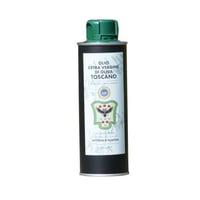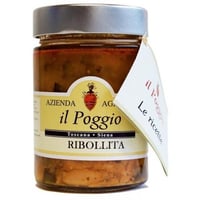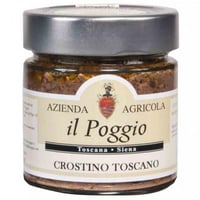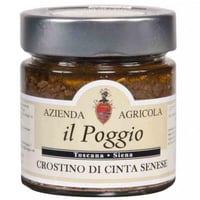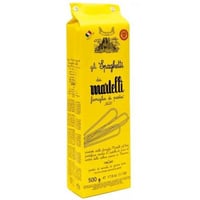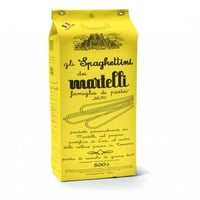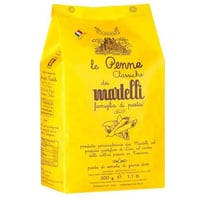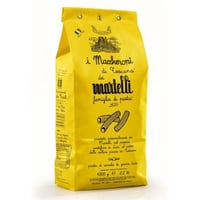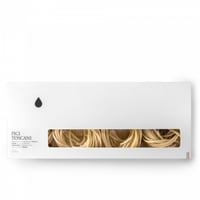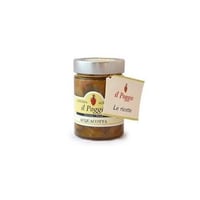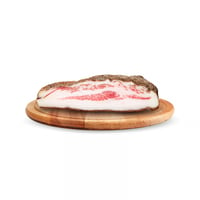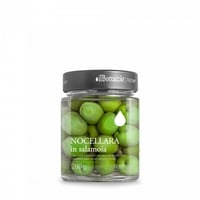Typical Tuscan Products
Looking for typical Tuscan products? On our shop, you can find the excellences of this region, where artisan companies aim to preserve flavors and traditions that have been passed down through generations and that make up, in fact, the gastronomic culture of our country. A true taste itinerary that touches all of Tuscany and its specialties.
How we source and ship typical Tuscan products
Spaghetti & Mandolino has always been synonymous with quality: we are the only e-commerce in Italy that guarantees the best typical Tuscan products online. We check every shipment and packaging to preserve the properties and integrity of each product, and we are committed to evaluating all Tuscan producers before including them on our e-commerce platform.
Typical Tuscan Products: online sale
There are Italian territories that epitomize the very image of our Belpaese. Tuscany is one of them. When you want to define Italy in a single image to the world, a lonely farmhouse on a hilltop reached by a road lined with cypress trees suffices. How many times have we also been captivated by this image? Tuscany is perhaps one of the Italian regions that most fascinates and captivates the world with its beauty. Elegance and beauty have always been closely linked. Since the moment the light shone upon the world with the city of Florence. The end of the Middle Ages and the beginning of the Renaissance.
It is the 14th century, and here begins the renewal of man in the world after the medieval dark ages. A fundamental shift that changes the customs and habits of people. Cities undergo a form of modernization that alters their features, and artists emerge who still stir the human soul today. The sense of aesthetics even reaches the plate.
For the first time since the Roman Empire, eating is no longer just about nourishment. Food becomes an element and a path to beauty and pleasure. For the first time, a hedonistic dimension of man is reflected in typical products, particularly Tuscan products. Beautiful to look at and delicious to eat. This combination begins to assert itself in the Renaissance courtly cuisine. The Medici are a powerful family dominating the Tuscan territory and clashing with other great powers of the time, such as Pistoia, the Maritime Republic of Pisa and Livorno, Siena, and Grosseto. These are City-States that begin to trade their goods, including, of course, the delicacies of their territories.
Tuscan products that made history
It is certain that wine in Tuscany has always prevailed and continues to dominate the regional agricultural economy. Alongside olive oil, which at the time was used as a reserve to illuminate cities and the monuments that adorned them. However, Tuscany has always been a land of grains and cereals, as well as a dairy reserve, thanks to its many pastures and sheep farming. A cattle breed has preserved its history in the Casentino area and in the Val di Chiana, the Chianina, which today has become one of the most prized breeds in the world, providing Florentine steaks that are recognized worldwide. Tuscany is a land of sea, hills, and mountains.
Extraordinary forests of ancient oak trees, where the sacred silence of nature still prevails today. Forests chosen by Saint Francis for his hermitage at La Verna, in the park of the Casentinesi Forests, where he received the stigmata. Tuscany is a wild land in Maremma, where the butteri (cowboys) still herd their cattle on horseback. A land of deep clay between the Sienese hills, where prestigious vineyards and olive groves cling. A coastal region with iconic places of contemporary high society: Viareggio, Forte dei Marmi, Marina di Pietrasanta. Mountains of white marble between Massa and Carrara, which have given rise to the greatest works of art of all time, sculpted by Michelangelo, Bernini, and Canova. Timeless vine-covered hills where the art of winemaking dates back to the ancient Etruscans and then the Romans: Chianti Classico DOCG, Montalcino, Montepulciano, and Bolgheri are names etched in the memory of all wine lovers worldwide. The woods of Lunigiana, where the purity of meadows and a nature colored by flowers and aromatic herbs still endure.
Tuscan DOP products
Let’s talk about the best-known DOP products from this region. The Lardo di Colonnata DOP, for example. Colonnata, a small village nestled in the white marble rocks of Carrara, is a town that blends with the stone. An ancient tradition of the marble quarry workers was to preserve the poorest part of the pig, the subcutaneous fat, in cavities carved into the rock, mixing it with aromatic herbs typical of the area, such as rosemary, bay leaves, and sea salt. The culture of Lardo di Colonnata endures today and has reached the most prestigious tables worldwide. A peasant intuition that has now become a cult and sought-after product.
Another product that unites the Tuscan lands is Prosciutto Toscano DOP, which is particularly savory and salty compared to Parma DOP and San Daniele DOP. But all typical Tuscan cured meats are particularly salty. The reason lies in the fact that Tuscan bread is saltless, making it perfect for pairing with already salty cured meats. A medieval and Renaissance legacy. At that time, the country’s largest salt pans were controlled by the Papal State, and to buy salt, one had to go through them and pay a concession tax. Florence and Tuscany have always been fierce opponents of the Papal State, and for this reason, they freed their bread from salt and avoided contributing to the enemy.
Tuscany also boasts a true cheese-making tradition, with its stronghold in the Pienza area. The Pecorino Toscano DOP is its main representative.
Tuscan EVO oil, saffron, sweets: other Tuscan excellences
The production of high-quality olive oil is also very important for the national economy, with the main DOPs being Chianti Classico DOP, Lucca DOP, Terre di Siena DOP, and the more general Toscano DOP.
San Gimignano, in addition to being famous for its beautiful towers and alabaster craftsmanship, is also important for the production of Saffron of San Gimignano DOP.
Siena, on the other hand, stands out for its production of Renaissance-style sweets, which remain a testament to a cuisine that is not only good but also beautiful. The Ricciarelli di Siena IGP are adorned with a touch of powdered sugar to enhance their visual appeal. They become the sweets of festivities and the favorites of the court lords. Today, they grace tables worldwide, especially during the Christmas season.
We spoke of typical grains that have composed the most important Tuscan recipes for centuries, such as Ribollita and the sumptuous peasant soups. The Fagiolo di Sorana IGP, Farina di Neccio della Garfagnana DOP, and Farro della Garfagnana IGP. The chestnut forests still survive in Tuscany, while they are disappearing in many parts of northern Italy. Hence, their protection is important to preserve these ancient giants of the forests. Here are the Chestnut of Monte Amiata IGP, Marrone del Mugello IGP, Marrone di Caprese Michelangelo IGP.
Tuscan Slow Food Presidia
We won’t list here the multitude of products protected as Slow Food Presidia, ST, or PAT, nor the De.Co., as it would result in an encyclopedia. But all of this stems from the history of this magnificent region. Always rich in raw materials, which have been elevated from the oldest kitchens to the most noble cuisines. Furthermore, the sense of belonging, which also here comes from ancient (in a positive sense) rivalries, has strengthened the awareness of their uniqueness.
All that’s left for you is to discover what lies within this fantastic chest full of typical Tuscan products available for purchase online!
